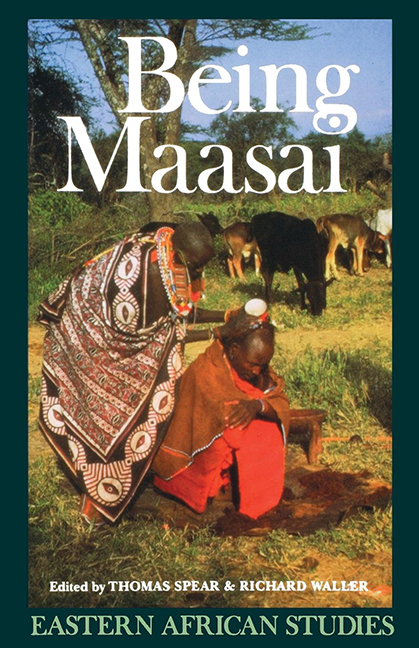Book contents
- Frontmatter
- Contents
- Maps, Figures & Illustrations
- Contributors
- Acknowledgements
- I Introduction
- II Becoming Maasai: Introduction
- III Being Maasai: Introduction
- IV Contestations and Redefinitions: Introduction
- 11 Acceptees and Aliens: Kikuyu Settlement in Maasailand
- 12 Land as Ours, Land as Mine: Economic, Political and Ecological Marginalization in Kajiado District
- 13 Maa-Speakers of the Northern Desert: Recent Developments in Ariaal and Rendille Identity
- V Conclusions
- Bibliography
- Index
11 - Acceptees and Aliens: Kikuyu Settlement in Maasailand
from IV - Contestations and Redefinitions: Introduction
Published online by Cambridge University Press: 30 August 2017
- Frontmatter
- Contents
- Maps, Figures & Illustrations
- Contributors
- Acknowledgements
- I Introduction
- II Becoming Maasai: Introduction
- III Being Maasai: Introduction
- IV Contestations and Redefinitions: Introduction
- 11 Acceptees and Aliens: Kikuyu Settlement in Maasailand
- 12 Land as Ours, Land as Mine: Economic, Political and Ecological Marginalization in Kajiado District
- 13 Maa-Speakers of the Northern Desert: Recent Developments in Ariaal and Rendille Identity
- V Conclusions
- Bibliography
- Index
Summary
The dynamics of identity formation and change among the Maaspeakers, and of their relations with outsiders, have been re-evaluated in recent years. Emphasis has shifted away from the delineation of neat ethnic boundaries towards a concern with the ways in which such boundaries are first drawn and then maintained, adjusted or even dissolved; and it is in this context that the processes of community formation and change can best be examined. Formerly, the Maasai, in particular, were seen as the type of a self-consciously exclusive ethnic group rigidly devoted to a highly specialized form of subsistence which generated cohesion within the community and served to mark it off symbolically, economically and socially from others. They now appear as a prime example of adaptation and ethnic mutability, pursuing strategies of accumulation and survival within a regional economy which included a variety of local communities with different but interdependent modes of subsistence.
Much of the impetus for re-evaluation has come from the study of the Maa-speakers during their expansive phase in the nineteenth century when boundaries between different Maa-speaking communities and between pastoralists, cultivators and hunters in the Rift Valley region were permeable, constantly shifting and subject to continuous redefinition. Individuals and groups moved between different communities and economies, altering their identities as they did so. Communities were able to absorb — and to shed — members easily and rapidly in response to changes in the availability of resources and in the demand for labour (Waller, 1985b).
With the establishment of colonial rule after 1900, the era of expansion came to an end. Communities which had previously had shared economic interests and, in part, a common ideology of growth were now being separated by divergent patterns of development and by different experiences under colonial rule. In the process, identities that had once been complementary now came to symbolize norms and values that could be perceived as being alien or opposed (Galaty, 1982b). Identities also became more exclusive and, in some cases, bitterly contentious. Imprecisely drawn boundaries hardened and became policed borders that divided rather than united communities on either side.
- Type
- Chapter
- Information
- Being MaasaiEthnicity and Identity in East Africa, pp. 226 - 257Publisher: Boydell & BrewerPrint publication year: 1993

